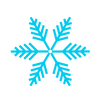Many of us end up with enough ice packs in our freezers, seemingly appearing out of nowhere. These handy packs are great for soothing injuries or keeping our food cold on trips. However, they can take up a lot of space and you might wonder how to get rid of them properly. Throwing them in the trash isn't the eco-friendly choice. Let's explore the right way to dispose of them.
The Best Way to Dispose Gel Ice Packs

Do you find yourself with too many ice packs in your freezer and aren't sure what to do with them? Here are the best ways to dispose of gel ice packs without harming the environment:
Step 1: Identify the Type of Gel Pack You Have and Its Contents
First, identify the type of gel ice pack you have and its ingredients. The disposal method may vary based on this. If your ice pack has a sturdy plastic shell, you can simply throw it away as it doesn't contain any harmful materials and won't leak, causing harm to the environment.
Step 2: Empty the Gel Packs
If your ice pack has a flexible plastic casing, thaw it first before cutting it open and squeezing out the gel into the trash can. The plastic film should then be rinsed, dried, and recycled. Because this is a unique sort of plastic, similar to that used in grocery bags, it must be recycled at a specific site that targets plastic bags. Do not toss it in the garbage.
If you can't go to a recycling center, ask if they offer pick-up services, even if there's a fee—it's better for the environment. Some stores, like retail chains and mostly grocery stores, also accept this plastic for recycling.
Note: Never pour gel pack gel down the drain or flush it down the toilet—it can clog pipes. If your ice packs only contain water, drain it in the sink and recycle the plastic bags separately.
Step 3: Consider Donating Your Gel Packs
If your gel packs are still usable, consider donating them instead of throwing them away. You can post them on Craigslist, Freecycle, and eBay, among other sites and apps.
You can also donate them to a food bank that will accept ice pack donations. Food banks can use the donated ice pack to keep food fresh while delivering it to distant locations. Similarly, you can give leftover ice packs to schools, churches, and charitable organizations so that they can be used to keep lunches cool and fresh.
Step 4: Give Them Away to Friends, Relatives, and Athletes
Another option to get rid of these gel packs is by giving them to relatives, friends, or athletes you know. These packs can help relieve pain and inflammation from sports or other activities-related injuries.
Your relatives and friends might also find the packs useful for long road trips, camping, or picnics at the beach or park. The packs will keep their food and drinks cool and fresh. Before giving them away, though, make sure the packs aren't damaged, as this can reduce their effectiveness and make them useless.
Can Gel Packs Be Used As Plant Fertilizer?

Credit: Envato Elements/ wayhomestudioo
Although some manufacturers claim that the gel can be used as a plant fertilizer, make sure to be cautious until you know exactly what ingredients are in it. If the package mentions the manufacturer's name, you can reach out to them and ask for the ingredients. If you don't get a response and still want to try it, dilute the contents with water and test it on a plant to see how it reacts.
How Do Gel Packs Impact the Environment?
Gel packs are causing a big problem: they're adding to microplastic pollution. Microplastics are tiny plastic pieces that form when products break down or degrade. They're harmful to the environment and can also harm animals. They've been found in water, alcohol, and food, especially seafood.
The gel inside these packs contains super absorbent polymer, which is a type of microplastic. Because this gel soaks up water, burning it isn't a good idea. Plus, this polymer doesn't break down easily—it can take about 500 years! So, what should you do? Reuse or recycle these packs to avoid harming the environment.
FAQs
Can gel packs be reused?
Yes, gel packs can often be reused multiple times before they lose effectiveness. Make sure they are undamaged and clean before reusing them.
How long can gel packs typically last?
The lifespan of gel packs can vary depending on usage and storage conditions. Generally, they can last for several years if properly maintained.
Can gel packs be refrozen after thawing?
Yes, gel packs can typically be refrozen after thawing. However, it's essential to ensure they are fully thawed before refreezing to avoid damage to the pack.
Are gel packs safe for children and pets?
Gel packs should be used with caution around children and pets. While the gel inside is generally non-toxic, ingestion can still pose a choking hazard. Always supervise children and pets when using gel packs.
Summary
Gel ice packs can be helpful in a variety of situations, but they can also be dangerous. What's the use of ditching plastic straws if you're still using these packs? Why not put your money towards something that is more environmentally friendly? Check out Nice Packs Dry Ice Packs. These packets contain zero polymers and can be reused numerous times while taking up minimal freezer space. Shop with us today.


